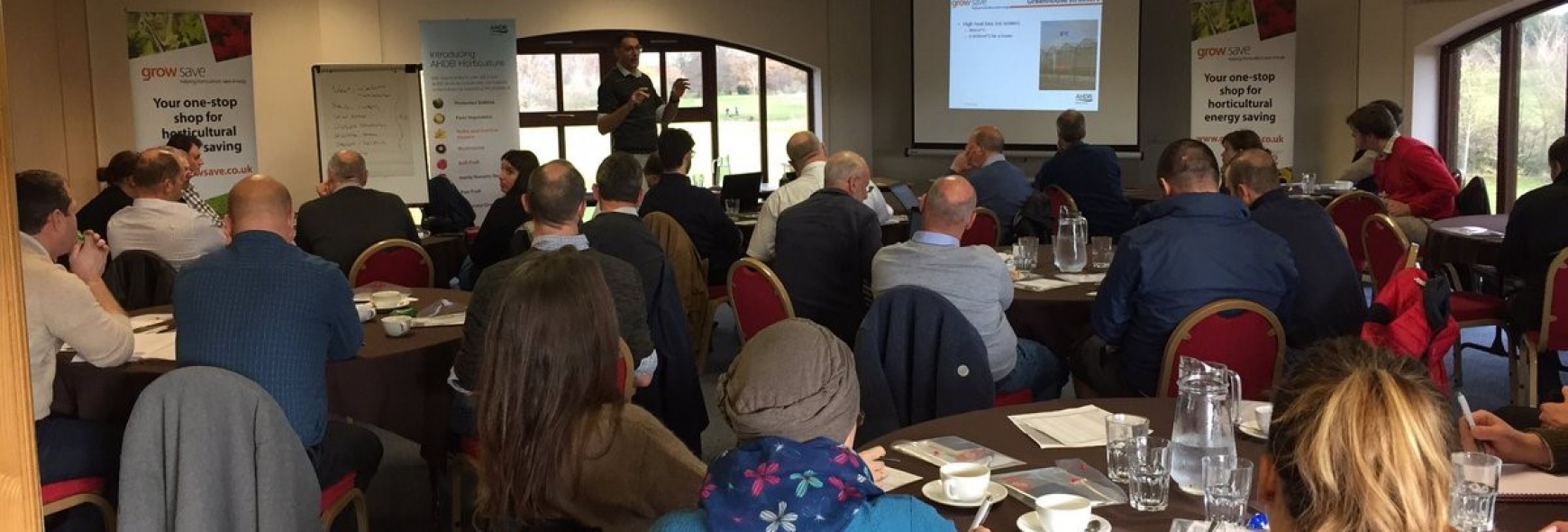Over the last 11 years, GrowSave has established itself as a source of knowledge transfer for the horticulture sector, focusing specifically on Protected Edibles (PE) and Protected Ornamentals (PO). Recently, however, we have had the opportunity to include Soft Fruit (SF) in our programme. On Monday 19 November, we held our first event specifically for SF, focusing on heating and lighting in glasshouses.
Like PE and PO, growers of soft fruit under cover face similar challenges in maintaining an optimum environment for their crop. Jon Swain from GrowSave explained why heat use is important for effective growing, used as it is to maintain glasshouse temperature, but also to keep humidity levels under control. While many will be familiar with conventional heating systems, such as gas or oil boilers and combined heat and power (CHP), renewables (e.g. biomass boilers, heat pumps) are also viable options. Jon explained the importance of ensuring the system is appropriately sized to the application and can output the desired temperatures.
Once a system is up and running, it can’t simply be forgotten. Maintenance is a key factor to ensure efficient operation. Some installations will be lower maintenance than others. For example, heat pumps have few moving parts and an annual service is normally sufficient; CHP systems, on the other hand, will require regular servicing and maintenance.
Depending on the system being installed, growers may be able to take advantage of government grants and incentive schemes. The Renewable Heat Incentive (RHI) is set to continue into 2021, and can help make renewable technologies a viable option to replace existing fossil fuel installations or for new projects.
While heating is fairly commonplace, the concept of supplementary lighting for soft fruit is still relatively new within the UK sector, although lights have been used in horticulture more generally for over 50 years with the aim of increasing production. During that period, high-pressure sodium (HPS) has established itself as the technology of choice for many, and largely retains its position as the industry standard. The main challenger these days is LEDs; developments in LED technology have seen the efficiency improve significantly in the last 10 years or so, whereas HPS performance has remained fairly static. However, the biggest hindrance to greater uptake of LEDs is price – the large capital investment required to install a full-LED setup is likely to be prohibitive. For those that already have HPS infrastructure, it can be even harder to justify, despite the fact that HPS lamps use around twice as much energy as LEDs and have a shorter lifespan.
The main reason to use supplementary lights is to promote photosynthesis, extending day length and season so the crop can be grown to yield more than would otherwise be possible. To determine whether it is worth the investment can be difficult. Industry data for long-term average production both with and without lighting can be useful to help calculate the potential financial benefit.
We are holding a series of GrowSave events over the winter, click here to find out more.


